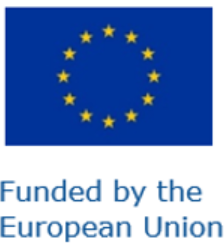In 2022, the Government Transparency Institute and the Transparency International launched an interactive dashboard to shed light on the interplay between corruption risk and pharmaceutical prices. The comprehensive dataset, which encompasses detailed procurement contract information for pharmaceuticals across nine countries, allows for robust comparisons and trend analysis. The dashboard utilizes the Corruption Risk Index (CRI), a composite measure of corruption risk indicators, and unit prices of standardized pharmaceutical products (Anatomical Therapeutic Chemical Code of the WHO). The platform empowers stakeholders …
Author: Julianna Pásztory
Efficiency gains from anti-corruption in pharmaceuticals procurement: Analysis of 9 countries across 3 continents
Veljanov, Z. and Fazekas, M. (2023). Efficiency gains from anti-corruption in pharmaceuticals procurement: Analysis of 9 countries across 3 continents. GTI-WP/2023:04, Budapest: Government Transparency Institute.
Public procurement of pharmaceutical products represents a large share of countries’ health care spending. The crucial importance of pharmaceutical products has been further exposed by the COVID-19 pandemic. Inefficiencies and corruption risks in public spending on the procurement of pharmaceuticals increase medical costs and place a heavy burden on national budgets and patients.
To support …
Linked Beneficial Ownership data? Challenges and opportunities
Fazekas, M., Poltoratskaia, V., Vianello, M. and Trautvetter, C. (2023). Linked Beneficial Ownership Data? Challenges and Opportunities. Network of Experts on Beneficial Ownership Transparency – NEBOT Policy Paper 6. Publications Office of the European Union, Luxembourg
One of the most widely-accepted policy goals of beneficial ownership registers is to help tackle money laundering and financial crime. In order to further this goal, this paper first identifies types of data needed to track dark money and assesses how these can be …
Enhancing law enforcement efficiency by bringing together public procurement data analytics and civil monitors – “iMonitor” project has started
(Project: 101103267 — Call: ISF-2022-TF1-AG-CORRUPT)

Due to the lack of monitoring capacity, law enforcement is typically able to investigate a small portion of likely corrupt cases. To remove obstacles to corruption detection and investigation we set out to combine Big Data analytics with extensive civil monitoring of ongoing contracts in Catalonia (Spain), Italy, Lithuania, and Romania. We build on our prior EU-funded projects making public procurement data and corruption risk indicators available (opentender.eu) and a citizen reporting …
Corruption risks in public procurement through the COVID-19 pandemic in Europe
Fazekas, M., Hernandez Sanchez, A., Abdou, A. and Kofrán, D. (2023). Corruption risks in public procurement through the COVID-19 pandemic in Europe. GTI-WP/2023:03, Budapest: Government Transparency Institute.
The COVID-19 pandemic has been a major emergency globally, requiring rapid responses to protect citizens’ health and lives. In order to inform future emergency policies, this paper sets out to track the corruption risk impact of the COVID-19 pandemic and the policies implemented to tackle the pandemic.
We adopt a mixed-methods approach, …
Corruption Risks and State Capture in Bulgarian Public Procurement
Fazekas, M.; Poltoratskaia, V.; Tóth, B. (2023). Corruption Risks and State Capture in Bulgarian Public Procurement (English). Policy Research working paper; no. WPS 10444 Washington, D.C.: World Bank Group.
This paper sets out to measure and analyze corruption risks, patterns of favoritism, and state capture in public procurement in Bulgaria. It draws on two main types of data: large-scale administrative data on public procurement and the list of politically exposed persons. The analysis rests on calculating individual corruption risk …
Corruption risk assessments: country case studies highlight advantages and challenges of diverse approaches
Poltoratskaia, V., Fazekas, M. (2023). Corruption risk assessments: country case studies highlight advantages and challenges of diverse approaches. Bergen: U4 Anti-Corruption Resource Centre, Chr. Michelsen Institute (U4 Issue 2023:2).
Our research on corruption risk assessments (CRAs) identifies three main approaches: centralised, decentralised, and transparency-oriented methodologies. Case studies from the Netherlands, Lithuania, Mexico, and Italy highlight the role of resource and institutional constraints in the choice of approach, and the importance of ensuring high-quality, complete, and accessible data. To ensure the …
Public procurement cartels: A large-sample testing of screens using machine learning
Fazekas, M., Tóth, B. and Wachs, J. (2023). Public procurement cartels: A large-sample testing of screens using machine learning. GTI-WP/2023:02, Budapest: Government Transparency Institute.
Cartels in public procurement impose high costs on public budgets. Precisely measuring them has a prominent policy and academic importance. The literature so far used data which is not widely available, aimed to identify specific behaviours in isolation, and considered few cases to generalise from. By implication, it has not produced comprehensive and generalisable knowledge able …
Overview of corruption and anti-corruption in infrastructure development
Adam, I. and Fazekas, M. (2023). Overview of corruption and anti-corruption in infrastructure development. U4 Helpdesk Answer, Transparency International.
Roughly one-half of all fixed capital investment by governments is in the construction of public infrastructure – an essential component of economic growth and social development, especially in developing countries (Pyman 2021). Yet at the same time governments, citizens and funders are frequently dissatisfied with the outcomes of infrastructure projects as they often involve the waste or misallocation of precious state …
Introducing E-Procurement in Bangladesh: The Promise of Efficiency and Openness
Blum, J. R., Datta, A., Fazekas, M., Samaddar, S. and Siddique, I. (2023). Introducing E-Procurement in Bangladesh: The Promise of Efficiency and Openness (English). Policy Research working paper; no. WPS 10390; Impact Evaluation series Washington, D.C. : World Bank Group.
Governments around the world spend about one-third of their budgets through public procurement systems where electronic administration of public tenders promises great benefits. However, surprisingly little is known about how, under which circumstances, and through which features electronic systems work. …